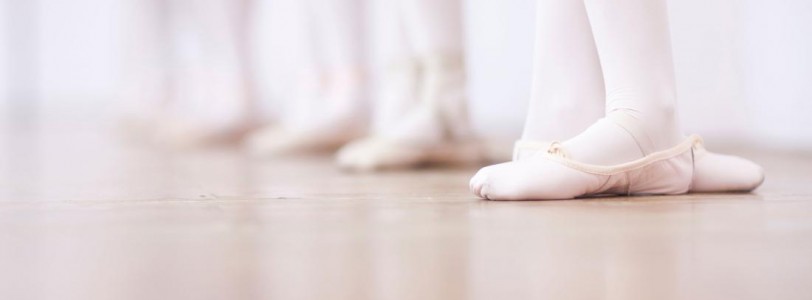Ballet begins the entire story of dance and traces back originally to the courts of King Louie XI within the sixteenth century and is the origin and bases to all dance styles we have now in this current day and age. However, possibly because of this reason, it is the only dance form still stuck in its time with a very strong stigma attached to it that can't be moved passed. Still there is an ideal shape and size that a dancer has to conform to, then the strong stigma that men and boys find hard to move past as much as black men and women, and the strong stigma of sexuality it questions. All other dance forms and styles that have all stemmed from ballet do not hold this strong stigma that ballet itself does; it is very much still stuck within the time period of its origin, no other style raises any questions within race or sexuality and holds really no conformities to how to look.
Firstly that it is presumed that there is such a small percentage of males within the world of ballet? Typically there will be one up the four males within a ballet class at a young age that then further decreases as time passes and they grow older. Such a push has been put forward to move past these stigmas that have taken off within other styles; for men to be on the same forefront as women but within ballet this still hasn't moved. It started with the push from Billy Elliot and has progressed all the way currently to BalletBoyz the all male ballet/contemporary company directed by Michael Nunn and William Trevitt and while this may be fantastic it still hasn't had the effect intended lower down the line to reach out to the young boys out there that it is alright for them to take to dance as a form of expression and they don't have to conform to a stereotypical 'boy' as such. As discovered by my research the director of City Ballet stated " ballet does not currently, nor has it ever, required a specific body type but rather engages its dancers based on their ability " also from research from a study based on the ideal ballet phyisique;Murray Kilgour the artistic director of Alberta Ballet school says "We're trying to wake people up to the fact that it is an absolutely legitimate opportunity for men as much as it is for women" as she, within her own school, is trying to overcome this stigma of boys and dance by putting up posters around and within her local area portraying boys with footballs and cricket bats alongside dancing boys to show that they are just the same and there is no need for such a harsh stigma to exist at such a young age giving the wrong example to young boys. Which I personally believe to be an exhilarating move to normalising the way dance is seen to all young people but especially for boys. With its continued push forward I think it will take great effect on generations to come.
Arising from this stigma then comes the questioning of sexuality, predominantly for males rather than females. This stigma is that just because you're a boy and you do ballet therefore means that you are gay; as for Kale Laszarick he was just one of forty boys age eight to eleven trying the art marked by the stigma overcoming his own and his father's views created by the stigma involved in a surge in a school in Canada trying to overcome this 'gay' stigma. This may be the case for both male and females but why should this even be bought up in such a large stigma when it isn't a question for females, but for both sexes, sexuality should never be questioned within an art form. However, despite this it is an extremely sexist stigma that should certainly not exist during this time we live in today after all the efforts that have been put in within government to be then filtered into society. Yet it has not fully been accepted within ballet as there is still such a stigma attached. An analogy of a puddle is used by a boy I interviewed named Jack Grieves who said "Imagine the world of ballet is a puddle, once fully amerced in this puddle this stigma disappears because it is no longer an issue, however its what's on the outside of this puddle people don't understand and think just because I'm a boy who does ballet I must automatically be gay which I'm not" this proves that this false assumption built up from outsiders looking in which stems from views taken many years ago that boys who dance must be gay because it's a 'girly' thing to do and it's not 'manly' . This was when both sexes had to conform to such a stereotype however in this day and age this is blurred so within ballet this should no longer be questioned but yet it still is and puts many young boys and teens from even trying it because they are afraid of what will be questioned of them.
What further builds from this is an ideal physique including both male and female in such a competitive world. At such a young age it is obvious when a young dancer will progress and go far and therefore they are pushed to the extremes to then be entered into prestigious dance schools such as the R.A.D (Royal Academy Of Dance). At the age of just eleven these students will have the same training right over the important years of puberty and both the males and females grow and develop within the same way due to their training and then grow and develop to all look the same as taken from my research from a book named 'The young Dancer' it shows examples of girls all different ages that still look very similar in height and weight. They all are shown in leotards with a waistband with each waist of a similar size and this age bracket spans from thirteen to twenty two. Therefore showing that their bodies do develop but due to their training they are trained to look the same and very similar in all aspects of height and weight, and this is for both the females and the males. As before this there would have been a height restriction before they were accepted and would have to be on a careful and balanced diet to obtain the right weight to be firstly accepted to be looked at before anyone would see you as a dancer move. Personally I believe this to be incredibly wrong as I believe you should be taken and judged for our talent and passions as a dancer not shape size and height. The ideal for a ballet dancer is 'slim with a long neck, a shortish to medium length torso, long legs and complimentary long arms' according to a study carried out discovering the ideal ballet physique studying where the ideal came from and how it still exists today.
At a young age when taken into elite schools, competing begins to happen between dancers of who can be the best 'in shape' in order to 'fit in' and be the best they can be as the main purpose for each dancer is to achieve perfection in ballet as an art form. This does not come from the shape and size of a person but their talent and love and joy in doing it. Ballet has such a stigma of an unhealthy competitive lifestyle because in many cases this is true in order to maintain this ideal image which again now in this day and age should no longer exist with the extensive research put into a healthy lifestyle. Many know disorders such as bulimia develop in many company dancers however this is ignored due to the up keep of the maintenance of this ideal which begins to shape once again at such a young age. Statistics taken from the study that I have researched reveal that twenty eight percent of dancers have had a lifetime of either anorexia or bulimia and that dancers are more at risk of developing eating disorders rather than non-dancer. I personally believe that this is due to the pressure that is put on young dancers and that they truly believe they have to look a certain way to please their directors and be given lead roles within the company. Which once again I believe to be completely wrong, and that as a dancer you should look after yourself and it's down to you to feed your body what it needs. Overall it should be about your talent and love for dancer over anything else.
Such pressure is put onto younger students; while ballet is the best fundamental bases for all dance as it teaches such discipline however when it reaches the stage of reaching the prestigious schools that's when students become self conscious as they consistently compare themselves to who came before them and when they learn from the 'norm' of what happen. This isan idea that came through within the study of the ideal ballet physique and I also share this as my personal opinion; that dancers with pressure on them compare themselves to others very harshly and ultimately put themselves down which leads to the statistic taken from the study that 'dancers are more perfectionists than young dancers; many believe thinness improves dance performance 'When ballet first began this slim body shape wasn't the ideal; it all stemmed from George Balanchine who preferred this shape as it gave such a portrayal of elegance and from this time this is what each and every choreographer has aimed for because they took a liking to his work and ideal until now within this day and age it has become the 'norm'. This is another statistic taken from the same study,' only 7% of dancers are satisfied with their weight most preferring to lose less 'I believe this is because of the stigma of the ideal shape. This puts many children off of a serious career in ballet despite their talent and love for it and also puts many parents off of putting their children under that much pressure at a young age as it may force them to ask questions about conforming and thinking they should look or be a certain way. I interviewed a parent of a child age eleven who has just made the choice to go to join a prestigious school who said " You can show emotion through dance, physically , and show different shades of yourself". Whilst I may agree with this statement her child may now go through ridicule, as I know from personal experience within the ballet world at a young age, within the coming years which will test her and possibly build her to be a strong and more resilient person it can sometimes destroy people. While it can be said within the dance world you need to be strong and resilient, it is not necessary to do so at such a young age when any child can make that development themselves without that pressure which is another big part of ballets stigma that puts so many parents and students off.
Overall, over the vast timeline that ballet has had it would be thought that it would be ahead of its time, but it's quite the opposite. It should have moved on with the times with all of the strong stigmas of sex and sexuality it contains and it's ideal such as all the other dance forms surrounding it. In questioning the stigmas attached so closely to ballet I have discovered that it has stayed where it is with no further movement forward, yet it holds itself up further back in time as it is the centre starting point and rock to everything. I have concluded that the world moved very quickly around in changing views and it holds itself back in time to serve as a reminder that it is the fundamental base for all other forms of dance. It can still be exactly this but also be dynamic and move forward to let go of these shattering stigmas which can destroy children and young adults with so much pressure at a young age and out so many people off of it in the first place. If it was able to shake all of this it would allow it as an art form to open up and be more widely accepted which would allow it to overcome some of its problems as an art form.







This is an interesting piece Natalie. I don't know much about ballet but I agree that it underpins other dance styles and it is about time that it changed with the times. I think that it is also peoples views that need to change as they often take longer to reflect the progress within an art form.